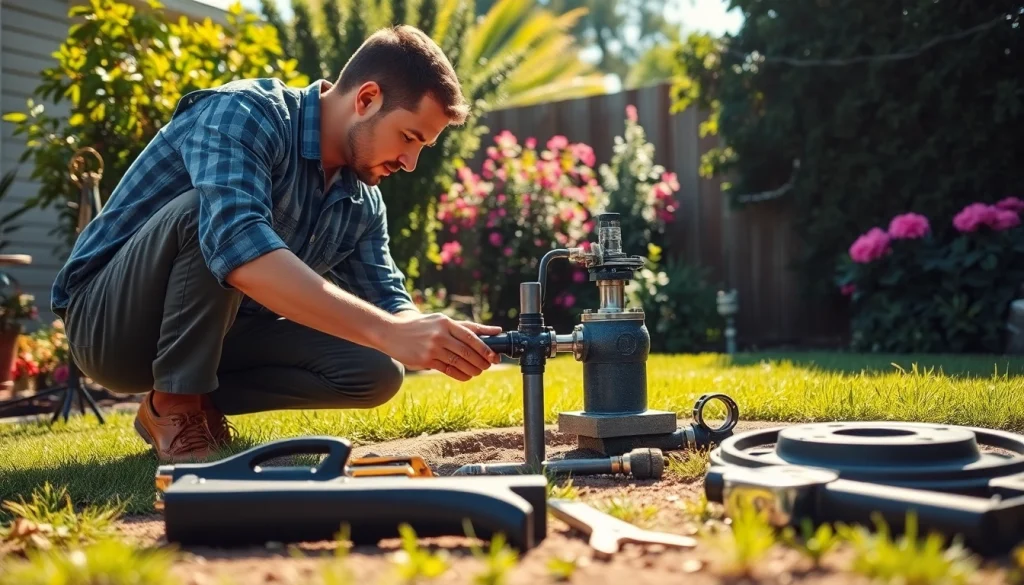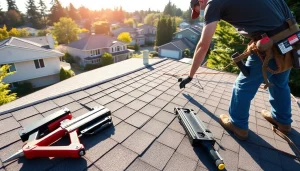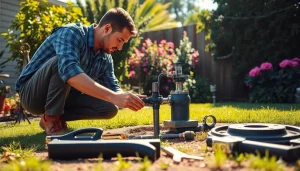Complete Guide to Efficient Well Pump Replacement: Cost, Process, and Tips

Understanding Well Pump Replacement
What is Well Pump Replacement?
Well pump replacement is the process of removing a malfunctioning or outdated well pump from your water well and installing a new one. This operation is crucial for maintaining an efficient water supply, as well pumps play a vital role in delivering groundwater to your home or business. As part of a well system, pumps can vary in type, size, and cost, often influenced by the depth of the well and water demand. Replacing a well pump can greatly enhance your water supply’s reliability and efficiency, leading to improved water pressure and quality.
Common Signs You Need a Well Pump Replacement
Recognizing when it’s time for a well pump replacement can save you from further issues down the line. Here are some common signs indicating that a replacement may be necessary:
- Low Water Pressure: A significant drop in water pressure might suggest your pump is struggling to operate effectively due to wear and tear or blockage.
- Frequent Cycling: If your pump turns on and off repeatedly, this can indicate a malfunction, potentially requiring a replacement.
- No Water Supply: Complete lack of water flow could signal a dead pump or significant failure in the pumping mechanism.
- Unusual Noises: Strange noises such as grinding or squeaking can indicate internal damage to the pump components.
- Increased Energy Bills: If your energy bills rise without an apparent reason, it could be that an inefficient pump is consuming more electricity.
Types of Well Pumps and Their Applications
Understanding the different types of well pumps can help you choose the right one during a replacement:
- Submersible Pumps: Positioned deep inside the well, these pumps push water to the surface and are suitable for deeper wells.
- Jet Pumps: These pumps are typically placed above ground and use suction to bring water up from shallow wells. They’re more common in residential applications.
- Hand Pumps: Often used as backup systems or in remote locations, hand pumps enable manual retrieval of water.
- Solar Pumps: A sustainable alternative, these pumps harness solar energy to operate, making them environmentally friendly.
Cost Factors of Well Pump Replacement
Average Costs for Well Pump Replacement
The cost of replacing a well pump can vary widely based on several factors. On average, homeowners can expect to pay between $2,800 to $6,000. The variation in cost often relates to the type of pump selected, the depth of the well, and additional installations or repairs that may arise during the replacement process.
DIY vs Professional Well Pump Replacement Costs
Deciding whether to undertake a DIY replacement or hire a professional can impact your overall costs. A DIY approach often saves on labor costs, typically about $1,000 to $2,000. However, this option requires a bit of skill, tools, and safety precautions to avoid potential mishaps.
On the other hand, hiring a professional, while more expensive, ensures that the replacement is handled correctly and may include warranties on labor and parts. This can provide peace of mind, knowing that if complications arise post-installation, they are likely to be addressed without additional costs.
Factors Influencing the Price of Well Pump Replacement
Several factors influence the overall price of well pump replacement:
- Type of Pump: The choice between submersible, jet, or solar pumps will heavily impact the overall cost, with submersible pumps typically being more expensive.
- Installation Depth: Deeper wells require more extensive labor and equipment, increasing costs.
- Permits and Regulations: Depending on local laws, obtaining necessary permits can add to the cost of replacement.
- Labor Fees: Different regions may have varying costs for labor, influencing total expenses.
- Additional Repairs: If your well system requires additional repairs — for instance, new wiring or a new pressure tank — this can significantly increase total costs.
The Process of Well Pump Replacement
Step-by-Step Guide to Replacing Your Well Pump
Replacing a well pump can be straightforward if approached correctly. Here’s a step-by-step guide to help you through the process:
- Assess the Pump: Identify the type of pump you have and determine if it needs replacing.
- Gather Tools: You’ll need wrenches, pliers, screwdrivers, a replacement pump, and safety gear.
- Shut Off Power and Water: Safety first! Make sure to shut off the power supply and water before proceeding.
- Disconnect Old Pump: Carefully disconnect the old pump following the manufacturer’s instructions, taking care not to damage any piping.
- Install New Pump: Install the new pump according to manufacturer specifications, ensuring that all connections are secure.
- Reconnect Power and Water: After installation, turn the water supply and power back on, checking for leaks.
- Test the System: Run the water to ensure everything operates correctly and efficiently.
Tools Necessary for Well Pump Replacement
Having the right tools on hand is essential to a successful well pump replacement. Here’s a list of tools you may need:
- Wrenches (various sizes)
- Pliers
- Screwdrivers
- Replacement pump
- Safety gear (gloves, goggles)
- Bucket or hose (for draining)
- Voltage tester
Safety Precautions During Well Pump Replacement
Safety should always be a top priority when working with electrical components and water systems. Here are vital safety precautions to consider:
- Always shut off the power supply when working on electrical systems.
- Utilize proper lifting techniques to prevent injury.
- Wear safety goggles and gloves to protect yourself from dirt and chemicals.
- Have a first-aid kit readily available in case of accidents.
- If unsure, consult a professional for guidance or assistance.
FAQs about Well Pump Replacement
How Long Does a Well Pump Last?
The lifespan of a well pump can vary depending on several factors, including pump type, usage, and the quality of installation. On average, submersible pumps last around 8 to 15 years, while jet pumps can last around 5 to 10 years. Regular maintenance can help extend the life of your pump significantly.
Can You Replace a Well Pump Yourself?
Yes, replacing a well pump yourself is possible if you have the necessary tools and some technical knowledge. However, it’s crucial to follow safety guidelines and manufacturer instructions carefully. If you’re not confident in your abilities, hiring a professional might be a more reliable option.
What to Expect After a Well Pump Replacement?
After a well pump replacement, you can expect improved water pressure and quality, as well as increased efficiency in energy consumption. It is also wise to monitor the system closely for the first few weeks to ensure everything is functioning as expected and to check for any leaks or related issues.
Maintaining Your Well Pump After Replacement
Best Practices for Well Pump Maintenance
To ensure your new well pump operates effectively over its lifespan, regular maintenance is essential. Here are some best practices:
- Schedule annual professional inspections to catch any potential issues early.
- Check the pump’s pressure settings regularly.
- Ensure that electrical connections are secure and not corroded.
- Keep the well area clean and free from debris.
- Monitor water quality and address any changes promptly.
Signs of a Failing Well Pump
Being aware of the signs indicating pump failure can save you costly repairs. Look out for:
- Strange noises or vibrations during operation.
- Intermittent or no water flow.
- Unusually high electric bills without corresponding water usage.
- Presence of sediment or discoloration in the water.
When to Schedule Professional Inspections After Well Pump Replacement
It’s advisable to schedule a professional inspection shortly after replacing your well pump. Following this, annual inspections are generally recommended to ensure long-term functionality. If you notice unusual signs or dips in performance at any point, don’t hesitate to call a professional for a thorough check-up.





